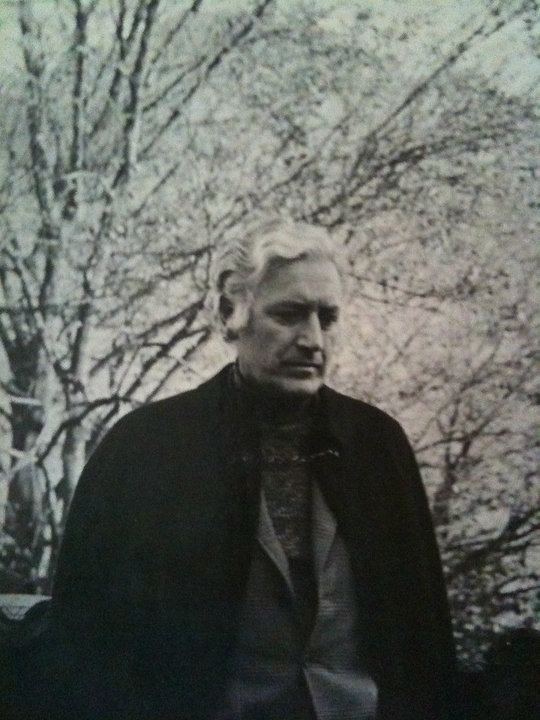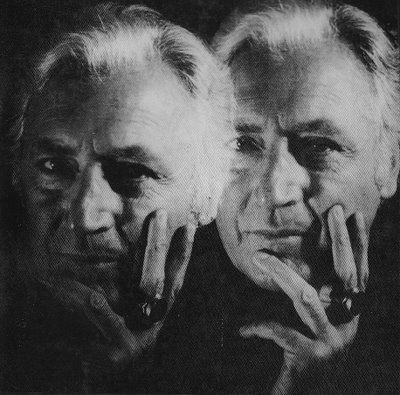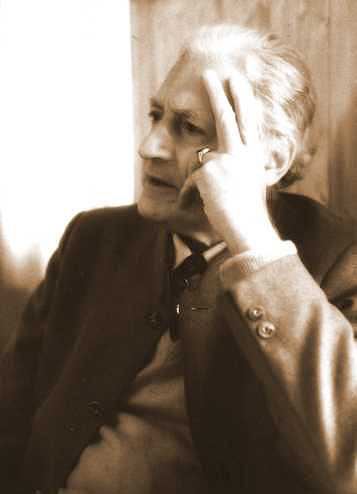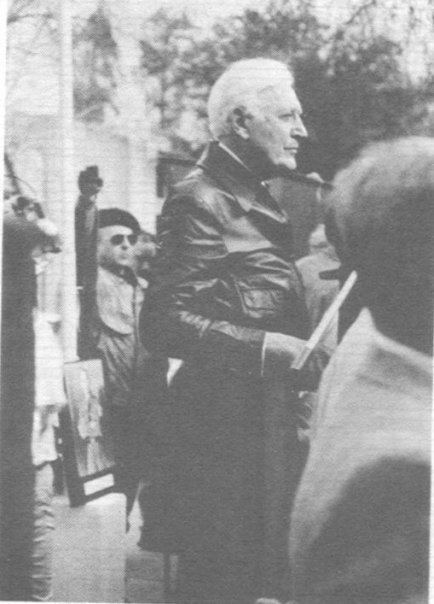Name Miguel Serrano | Role Journalist | |
 | ||
Died February 28, 2009, Santiago, Chile Books Nos, Book of the Resurrection | ||
Alex on miguel serrano
Miguel Serrano (10 September 1917 – 28 February 2009) was a Chilean diplomat, journalist and author of poetry, books on spiritual questing and Esoteric Hitlerism. From the 1950s up to 1970, when he was dismissed by Salvador Allende, he served as ambassador to India, Yugoslavia, Romania, Bulgaria and Austria.
Contents
- Alex on miguel serrano
- Interview to miguel serrano pt 1
- Early years
- Diplomatic work and later activities
- Ideas
- References

Serrano's anti-modernist neo-Gnostic philosophy claims to elucidate the extraterrestrial origin of the Hyperborean-descended Aryan race, image-bearers of the Godhead, and postulates a global conspiracy against them by an evil inferior godlet: The Demiurge, worshipped by the Jewish people, lord of planet Earth, spawner of the primitive hominid stocks, and author of all base materiality. Serrano foremostly synthesized the Hindu-Vedic and Nordic-Germanic religious traditions, both of which he considered to be of ancient Aryan-Hyperborean provenance, in addition to particularly esoteric and racialist interpretations of Buddhism, Christianity (or "Kristianism"), Luciferianism (not to be confused with Satanism), and Gnosticism. He was especially indebted to the Jungian theory of collective racial archetypes, borrowed heavily from Julius Evola in supporting a spiritual consideration of race, as opposed to a solely biological one, and followed Savitri Devi in regarding Adolf Hitler as an avatar (a divine incarnation) who battled against the demonic materialistic hosts of the Kali Yuga.

Interview to miguel serrano pt 1
Early years

Miguel Joaquín Diego del Carmen Serrano Fernández was born in Santiago and educated at the Internado Nacional Barros Arana from 1929 to 1934. Originally embracing Marxism, and writing for left-wing journals, he quickly became disillusioned with Communism, and was drawn to the Movimiento Nacional Socialista de Chile (M.N.S.), a Chilean Nazi Party (headed by Jorge González von Marées). In July 1939 he publicly associated himself with the M.N.S. (then renamed Vanguardia Popular Socialista – Popular Socialist Front), writing for its journal Trabajo ("Work").

After the Nazi invasion of the Soviet Union in July 1941, Serrano began his own biweekly political and literary review called La Nueva Edad ("The New Age"). Originally indifferent to antisemitism, Serrano discovered and began to publish material from The Protocols of the Elders of Zion in early November 1941. Later Serrano would transmute the Jewish world conspiracy alleged by the Protocols into a metaphysical one, following in the tradition of the Gnostic Cathars by identifying Yahweh as the evil principle itself: The Demiurge, lord of shadows, and ruler over our fallen planet.

In late 1941, Serrano was introduced to a Chilean esoteric order founded by "F.K." (a German immigrant to Chile), which claimed allegiance to a mysterious and far-flung Brahmin elite centered in the Himalayas. This mystico-martial order practiced ritual magic, including tantric and kundalini yoga linked to Nietzschean concepts of the will to power and fascist activism. He was initiated into the order in February 1942. Cult members regarded Adolf Hitler as a savior of the Indo-European or Aryan race. The order considered astral projection and other higher states of awareness as the natural ancestral heritage of all pure-blooded ("twice-born") Aryans. The order's master described Hitler as an initiate, a being of boundless and unprecedented willpower (shudibudishvabhaba), a boddhisatva who had voluntarily incarnated on earth in order to overcome the Kali Yuga; he claimed to have been in astral contact with Hitler, not only during the war but also after it had ended, "sure evidence that he was alive and had survived the Berlin bunker".
Convinced by these revelations, and prompted also by popular speculations as to Hitler's survival in Antarctica, Serrano accompanied the Chilean Army and Navy on their expedition to Antarctica in 1947–48, in the capacity of a journalist. The stark and lonely wastes of the polar region left a permanent impression on Serrano's mind. He made his first visit to Europe in 1951, still obsessed by the enigmatic figure of Hitler. Serrano visited and brooded over the ruins of the Berlin bunker, Spandau Prison, and the ruins of Hitler's Berghof in Bavaria. In Switzerland, he met and befriended Hermann Hesse, the well-known, Nobel Prize-winning German Romantic writer, and C. G. Jung. Jung's pre-war psychoanalysis of Hitler being a "spiritual vessel, a demi-divinity, a myth," and an embodiment of the "collective unconscious of his race" greatly influenced Serrano's worldview. He and Jung passionately exchanged thoughts on the meaning of mythology and archetypes in the modern age of dehumanizing mass technocracy. These encounters with Hesse and Jung culminated in Serrano's most famous and prestigious book, C.G. Jung and Hermann Hesse: A Record of Two Friendships.
Diplomatic work and later activities
In 1953, following a family tradition, Serrano entered the diplomatic corps and held various ambassadorial posts for Chile during the Ibáñez, Alessandri and Frei administrations from 1953 to 1970, in India (1953–62), Yugoslavia (1962–64), Romania, Bulgaria, and Austria (1964–70).
India seemed to him a source of esoteric truth, and he immersed himself in its spiritual heritage. He sought out the secret Siddha order of his Chilean master in the Himalayas, although Mount Kailash (where the order supposedly had its seat), was inaccessible to him in Chinese-administered Tibet. In his book, The Serpent of Paradise, Serrano describes this journey and claims that he had nevertheless discovered the "inner" aspect of Mount Kailash. He met many leading Indian personalities through his diplomatic position, becoming a personal friend of Jawaharlal Nehru, Indira Gandhi and the 14th Dalai Lama. He later told close friends that he had been the lover of Indira Gandhi. When the latter was assassinated, Serrano was afforded a prominent place at her funeral.
Serrano was Chile's representative to the International Atomic Energy Commission and United Nations Industrial Development Organization (UNUDI). He was dismissed from the Chilean diplomatic service in late 1970 by president Salvador Allende. Remaining in exile, he rented an apartment (previously inhabited by Hermann Hesse) at Montagnola in the Swiss Ticino.
During his ambassadorial postings in Vienna and subsequently in Switzerland, Serrano contacted and cultivated ties of friendship with Léon Degrelle, Otto Skorzeny, Hans-Ulrich Rudel, Marc "Saint-Loup" Augier and Hanna Reitsch. He paid visits to Julius Evola, Herman Wirth, Wilhelm Landig and Ezra Pound.
Serrano returned to Chile after the Pinochet coup in 1973. Finding the regime unsympathetic to his ideas, he adopted "the role of intellectual gadfly". He thought that the free-marketism of Pinochet's government was incorrect and akin to the direction taken by the Margaret Thatcher government in the UK. In May 1984, Serrano gave the Nazi salute at the funeral in Santiago of SS Colonel Walter Rauff. He convened a rally in Santiago on 5 September 1993, in honor of Rudolf Hess, and in memory of the 62 young Chilean Nazi supporters who were shot dead while occupying a social security building during an abortive coup in 1938. He maintained correspondence with neo-Nazi leaders such as Matt Koehl. He was interviewed in depth by the Greek far-right magazine To Antidoto, and has also featured in the literature of the Black Order.
Serrano owned some paintings by Adolf Hitler, including one bought at an auction in London in the 1980s. The reserve price was £5,000. Serrano was able to sell a Patek Phillipe watch (a present from Indira Gandhi) beforehand (at Sotheby's in London) to cover the cost.
Serrano died on 28 February 2009 in Santiago. Despite not being a Christian, Serrano's partner María Isabel Perez Quintela (also known as Sabela Quintela) arranged for him a funeral in a Catholic Church.
Ideas
Serrano termed his philosophy Esoteric Hitlerism, which he has described as a new religious faith "able to change the materialistic man of today into a new idealistic hero", and also as "much more than a religion: It is a way to transmute a hero into God."
In 1984 he published his 643-page tome, Adolf Hitler, el Último Avatãra (Adolf Hitler: The Last Avatar), which is dedicated "To the glory of the Führer, Adolf Hitler". In this arcane work Serrano unfolds his ultimate philosophical testament through elaborate esoteric and mythological symbolism. He insists that there has been a vast historical conspiracy to conceal the origins of evolved humankind. Serrano's epic vista opens with extragalactic beings who founded the First Hyperborea, a terrestrial but nonphysical realm which was neither geographically limited nor bound by the circles of reincarnation. The Hyperboreans were asexual and reproduced through "plasmic emanations" from their ethereal bodies; the Vril power was theirs to command, the light of the Black Sun coursed through their veins and they saw with the Third Eye. Serrano contends that the last documents relating to them were destroyed along with the Alexandrian Library, and that latterly these beings have been misunderstood as extraterrestrials arriving in spaceships or UFOs. However, the First Hyperborea was immaterial and altogether outside our mechanistic universe.
The latter is under the jurisdiction of the Demiurge, an inferior godlet whose realm is the physical planet earth. The Demiurge had created a bestial imitation of humanity in the form of proto-human "robots" like Neanderthal Man, and intentionally consigned his creatures to an endless cycle of involuntary reincarnation on the earthly plane to no higher purpose. The Hyperboreans recoiled in horror from this entrapment within the Demiurge's cycles. They themselves take the devayana, the Way of the Gods, at death and return to the earth (as Bodhisattvas) only if they are willing.
Determined upon a heroic war to reclaim the Demiurge's deteriorating world, the Hyperboreans clothed themselves in material bodies and descended on to the Second Hyperborea, a ring-shaped continent around the North Pole. During this Golden Age or Satya Yuga, they magnanimously instructed the Demiurge's creations (the Black, Yellow and Red races native to the planet) and began to raise them above their animal condition. Then disaster struck; some of the Hyperboreans rebelled and intermingled their blood with the creatures of the Demiurge, and through this transgression Paradise was lost. Serrano refers to Genesis 6.4: "the sons of God came in to the daughters of men, and they bore children to them". By diluting the divine blood, the primordial miscegenation accelerated the process of material decay. This was reflected in outward catastrophes and the North and South Poles reversed positions as a result of the fall of a comet or moon. The polar continent disappeared beneath the deluge and Hyperborea became invisible again. The Hyperboreans themselves survived, some taking refuge at the South Pole. Serrano regards the mysterious appearance of the fine and artistic Cro-Magnon Man in Europe as evidence of Hyperboreans driven southward by the Ice Age. In the then-fertile Gobi Desert, another group of exiled Hyperboreans established a fantastic civilization.
The world thus becomes the combat zone between the dwindling Hyperboreans and the Demiurge and his forces of entropy. But Serrano claims that the Golden Age can be reattained if the Hyperboreans' descendants, the Aryans, consciously repurify their blood to restore the divine blood-memory:
"There is nothing more mysterious than blood. Paracelsus considered it a condensation of light. I believe that the Aryan, Hyperborean blood is that – but not the light of the Golden Sun, not of a galactic sun, but of the light of the Black Sun, of the Green Ray."
